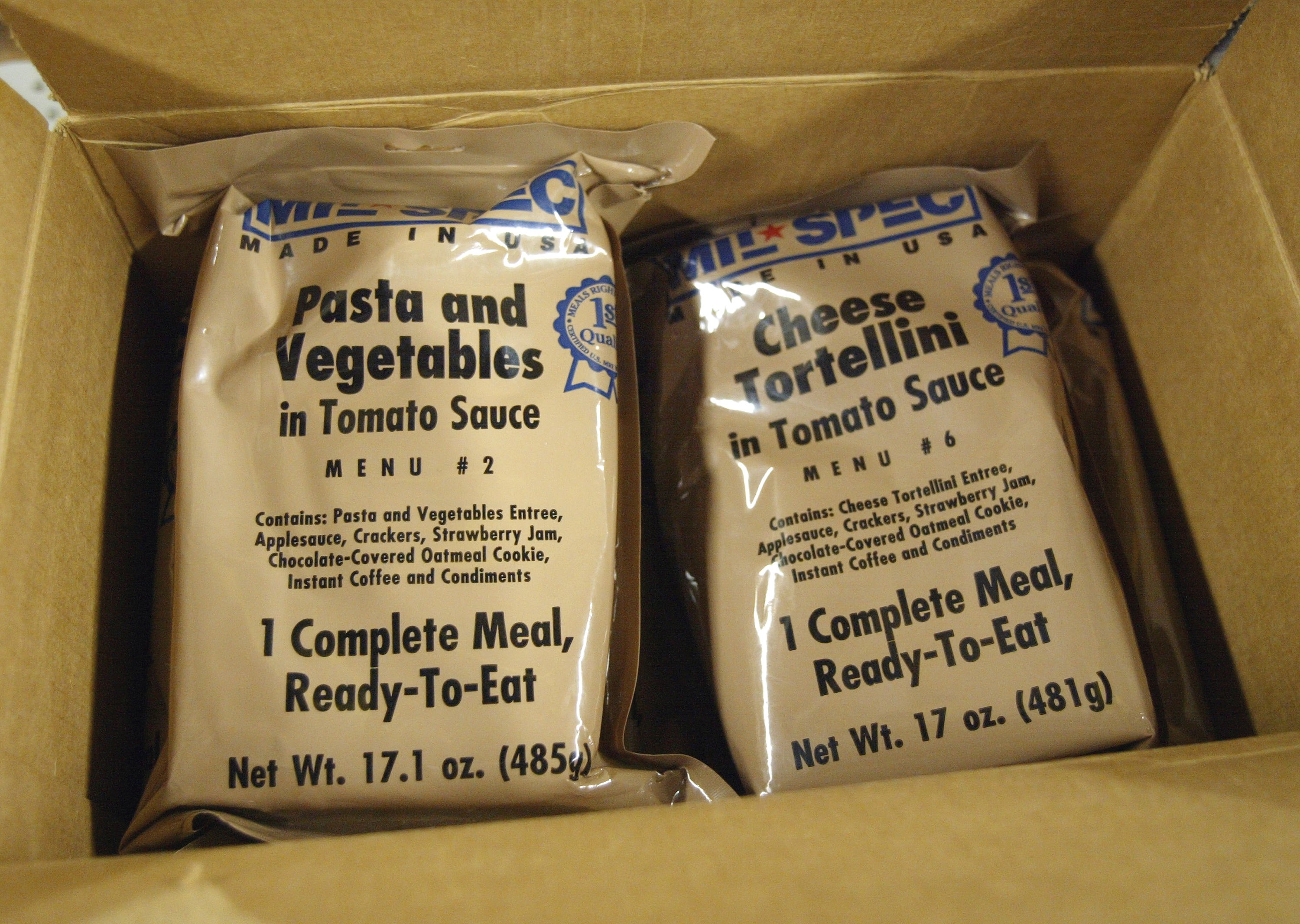Shelf life items are products that are effective, useful or suitable for consumption for a limited time period. They are expected to deteriorate or become unstable to the degree that a storage period must be assigned to assure that the material will perform satisfactorily in service. In short, the item spoils or will not perform its intended function for the customer after long-term, or even short-term, storage. All of these shelf life items are recognized for their sensitivity to light, temperature, moisture or handling. Packaging deterioration and improper storage or preservation can also adversely affect shelf life.

- It is important to understand what your MRE date code means, as it translates directly to MRE shelf life and freshness. An MRE date code is a 4-digit number stamped onto the outside of each MRE that helps you determine the expected shelf life. Specifically, it’s the date of.
- Most manufacturers offer a toll-free number to call for questions about canned food expiration dates. For a sampling of how to read product codes, See Below. Remember, the code stamped on the can is when it was packaged. The general rule of thumb is that canned food has a shelf life of at least two years from the date of purchase.
- On the 5 digit code the First 2 digits are the year. The next 3 digits are the day of the year (Jan 1 = 001 and Dec 31= 366 or 365) On the longer code the last 5 digits are MM/DD/Y should be right after a letter. These are good to know as lots of people can t read them and old boxes can be easily placed on the shelves.
PULL DATE CODES Primary Package Sample: Secondary Package Sample: HOW TO READ CODE ATES Our domestic packaged brands typically have a shelf life of between 18 and 26 weeks predicated on the particular brand and its intrinsic JUL2516 A01212359 JUL2516 A0122 characteristics. Imported- products will normally have a somewhat.
The 'Program Objectives' under 41CFR 101-27.203 cite the need to identify those items having a limited serviceable life. In order to assure maximum customer use of shelf life items, each of these items must be identified, including newly procured items having limited serviceability. Expired shelf life items no longer support the customer's mission, and incur additional costs for disposal. DoD customers maintain stocks of shelf life products to support their mission. GSA is sensitive to their needs concerning these items.
GSA must include the applicable shelf life clauses in solicitations and contracts. Specifying a maximum age on delivery will help to ensure that the customer receives the products with the maximum shelf life remaining, resulting in more effective use of these products. Specifying the proper marking for these items ensures that they will be effectively managed when received. Both are necessary to provide the best service to GSA's customers.
The office/activity Engineering/Technical support group can analyze solicitation requirements or product lines. Otherwise, look in Section Four of the FED-STD-793B, 'Depot Storage Standards' for commodity points of contact and the Federal Supply Groups (FSGs), or Federal Supply Classes (FSCs) that may have or need shelf life coding. The WEBFLIS (a nongovernment website) database identifies NSN shelf life items and their assigned shelf life codes.
Type I - are critical end-use items, the failure of which could endanger human life or cause major systems (such as an aircraft) to fail. Examples include:
- Preserved and packaged foods;
- Medicines;
- Heat dissipating coatings; and
- Some adhesives and sealing compounds.
These items have a definite, non-extendible shelf life. They are marked with an expiration date, after which they must be properly disposed. The cataloging data for each Type I item will contain an alpha shelf-life code, such as C for three months, H for 12 months and M for 24 months.
Type II - items are those for less critical applications, and which can be reinserted periodically to determine their continued fitness for use. Most shelf life items fall into this category. Examples include:
- Paints
- Pens
- Adhesive tapes
- Chemicals
- Disinfectants
- Markers
- Cleaning supplies.

They are marked with a reinsertion date, which may be extended several times, depending on established criteria and agency policy. The cataloging data for each Type II item will contain a numeric shelf life code, such as one for three months, four for 12 months, and six for 24 months.
The item manager in the agency responsible for the Federal Supply Class normally makes the determination. Within GSA, he or she will be in the standardization/engineering office of a Federal Acquisition Service (FAS) Center. The determination is usually based on the manufacturer's recommendation and government experience with similar products. Only NSN items are assigned a shelf life code.
Date Codes - Farner Bocken
Consider the assigned shelf life, the maximum acceptable age of the material when offered or delivered to the government (or both), and any special packaging or marking that may be required. This information will normally be specified in the technical description for NSN items. A minimum guaranteed shelf life may also be specified. Guidance for the age on delivery is given by the standardization/engineering offices in the 'Standards Engineering Desk Guide.'
Both Federal Standard 123 (FED-STD-123) 'Marking for Shipment (Civil Agencies)' and MIL-STD-129 'Military Marking For Shipment and Storage' require that they be marked with the following:
- Date of manufacture, cure (rubber and elastomers only), assembly or pack (subsistence only);
- Date of expiration (month and year), for Type I (non-extendable) items; or
- Date of re-inspection (month and year), for Type II (extendable) items.
GSA Shelf Life Management Program | GSA
FED-STD-793B is available online.